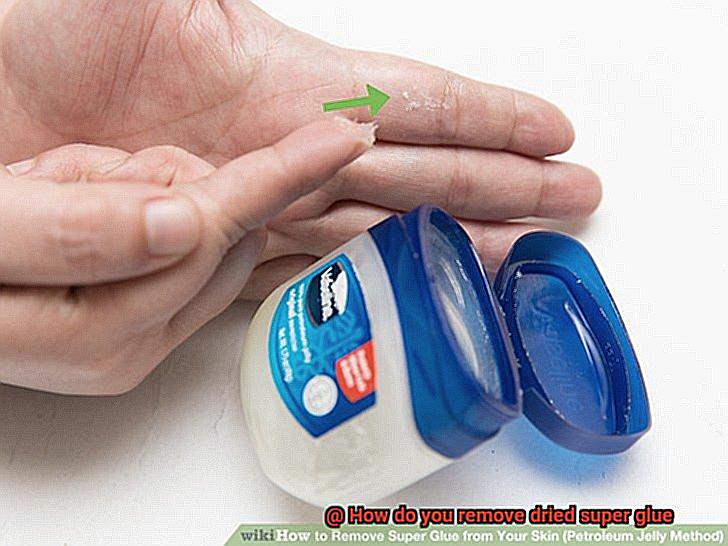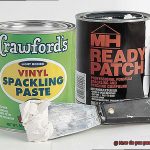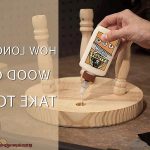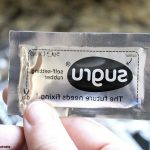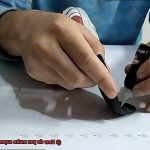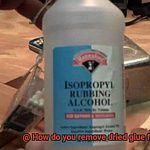Ever been stuck with dried super glue? We’ve all been there – accidentally bonding our fingers or gluing objects together.
But don’t panic. In this blog post, we’ll explore the amazing ways to remove that pesky dried super glue.
So grab your tools and get ready to join us on this exciting journey as we uncover the secrets to conquering dried super glue.
What is Super Glue?
Contents
- 1 What is Super Glue?
- 2 Materials Needed to Remove Dried Super Glue
- 3 Acetone Method for Removing Dried Super Glue
- 4 Vinegar Method for Removing Dried Super Glue
- 5 Rubbing Alcohol Method for Removing Dried Super Glue
- 6 Specialized Adhesive Removers for Removing Dried Super Glue
- 7 Seeking Professional Help to Remove Dried Super Glue
- 8 Conclusion
Super glue, scientifically known as cyanoacrylate adhesive, is a revolutionary invention that has transformed the world of adhesives. Renowned for its rapid bonding capabilities and extraordinary strength, super glue has become an essential tool for repairs and DIY projects. In this article, we will explore the captivating realm of super glue, delving into its properties, versatility, and effective removal techniques.
Properties of Super Glue:
- Lightning-Fast Bonding: Super glue is celebrated for its lightning-fast drying properties. Upon contact with moisture, it undergoes a remarkable process called polymerization, transforming into a solid state within seconds. This exceptional speed makes it an ideal choice for situations that demand immediate bonding.
- Unparalleled Versatility: Super glue possesses the remarkable ability to bond an extensive range of materials together. Whether it’s metals, plastics, ceramics, rubber, wood, or even human skin, this adhesive can adhere to diverse surfaces with ease. Its versatility makes it indispensable for a wide variety of applications.
- Unyielding Strength and Durability: The bond created by super glue is renowned for its extraordinary strength, often surpassing the sturdiness of the materials being joined. It can withstand vibrations, impacts, temperature fluctuations, exposure to moisture, and most chemicals without losing its adhesive properties. This durability ensures long-lasting and reliable bonds.
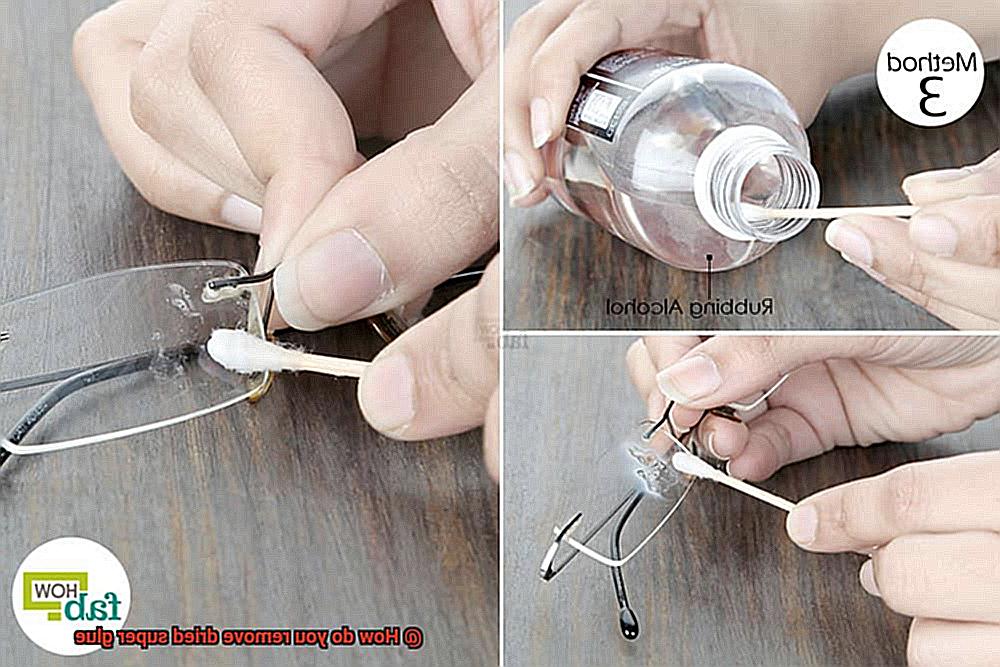
Removing Super Glue:
- Acetone Method: Utilizing cotton balls or swabs soaked in acetone (commonly found in nail polish remover) helps break down the chemical bonds of dried super glue. Gently rubbing the affected area with warm water and a clean cloth effectively removes any residue.
- Vinegar or Rubbing Alcohol Method: Applying white vinegar or rubbing alcohol to dried super glue can dissolve its bonds. Scrubbing the area gently with warm water assists in the removal of any remaining residue.
- Specialized Adhesive Removers: Market-available adhesive removers designed specifically for super glue removal contain ingredients that effectively dissolve the glue without causing damage to the surface. These specialized products can be a convenient and effective solution.
Materials Needed to Remove Dried Super Glue
Super glue is a remarkable adhesive that can bond almost anything together, but what happens when you find yourself in a sticky situation and need to separate those stubbornly bonded surfaces? Fear not, my friends, for I am here to share with you the secrets of removing dried super glue. In this guide, we will explore the essential materials needed to conquer this challenge and restore your surfaces to their former glory.
The Mighty Acetone:
Acetone is the superhero of solvents when it comes to removing dried super glue. Found in nail polish removers, pure acetone effectively breaks down the adhesive bonds, making it easier to remove. Just make sure to use it judiciously and avoid contact with sensitive materials like leather or painted surfaces.
Cotton Balls or Swabs:
These humble tools are essential for precise application of acetone onto the dried super glue. They allow you to control the amount of solvent applied, preventing it from spreading onto areas you want to preserve.
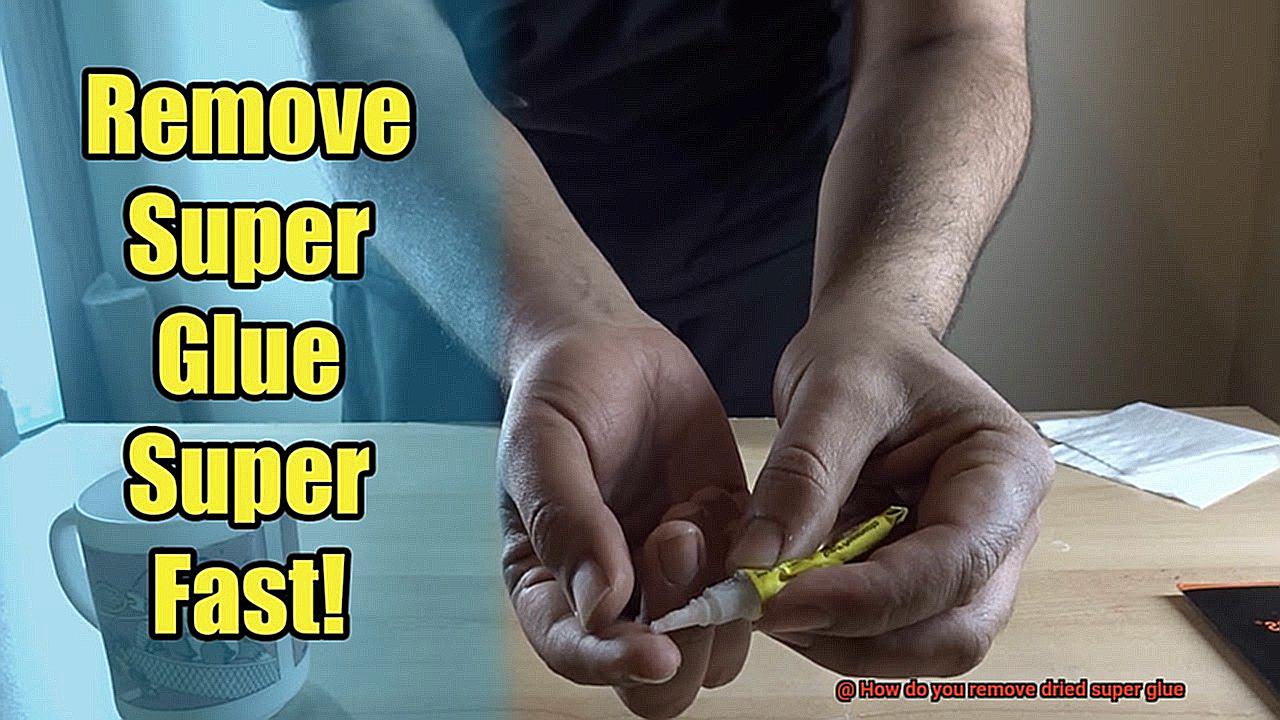
Plastic Scraper or Credit Card:
Gently scrape away the loosened glue using a plastic scraper or credit card. Be cautious not to apply too much pressure or use a metal scraper, as this could damage your precious surfaces.
Warm Water and Soap:
After removing the super glue, give your surface a thorough cleaning using warm water and soap. This ensures that any leftover residue is removed, leaving behind a clean and pristine surface.
Rubbing Alcohol:
If acetone is not readily available, fear not. Rubbing alcohol can be a trusty substitute. While not as potent as acetone, it still helps soften and dissolve dried super glue.
Petroleum Jelly:
For those stubborn super glue spots that refuse to budge, consider using petroleum jelly. Apply a small amount to the affected area and let it sit for a few minutes before attempting removal. This can work wonders in loosening the glue’s grip.
Acetone Method for Removing Dried Super Glue
Accidents happen, and when super glue ends up on a non-porous surface, it can feel like the end of the world. But fear not. I’m here to reveal a secret weapon: the acetone method. This powerful solvent can remove dried super glue like a pro. So grab some acetone, a clean cloth or cotton swab, and let’s get started.
Step 1: Prep and safety first.
Before diving into the acetone party, ensure you are in a well-ventilated area. Safety goggles are a must, especially if you’re prone to accidents. Remember, acetone is a potent solution that requires caution to avoid skin contact.
Step 2: Dab and wait.
Take your cloth or cotton swab and apply a small amount of acetone. Gently dab the affected area with the acetone-soaked fabric, relishing the satisfying sound of glue bonds breaking down. Avoid vigorous rubbing to prevent any surface damage.
Step 3: Give it time.
Patience is key here. Allow the acetone to work its magic for a few minutes. Watch in anticipation as it penetrates and softens that stubborn super glue.
Step 4: Scrape away.
Once the acetone has done its job, it’s time to delicately scrape off the softened super glue. You can use a plastic scraper or your trusty fingernail, but be careful not to scratch the surface in the process.
Step 5: Repeat if necessary.
If there are remnants of super glue left behind, don’t panic. Simply repeat steps 2 through 4 until that pesky adhesive is completely eliminated. Remember, patience pays off.
Step 6: Clean up time.
Bid farewell to super glue by giving the area a thorough cleaning with mild soap and warm water. This final step ensures the removal of any residue from the acetone, leaving your surface looking as good as new.
Vinegar Method for Removing Dried Super Glue
Accidentally spilling super glue on a cherished countertop or a brand-new ceramic vase can be panic-inducing. But fear not. The solution lies within your very own pantry – vinegar. In this article, we explore the vinegar method for removing dried super glue from a range of surfaces, providing you with an effective and accessible solution.
The Vinegar Method:
Before embarking on the super glue removal journey, gather your supplies: white vinegar, a soft cloth or sponge, and warm water. Let’s break down the steps:
- Soak the affected area: Begin by pouring a small amount of white vinegar onto your cloth or sponge. Gently dab it onto the dried glue, allowing the vinegar to penetrate and loosen the bond. Give it a few minutes to work its magic.
- Scrub away: Armed with a soft cloth or sponge soaked in warm water, gently scrub the area. The warm water will further break down the glue, making it easier to remove. Persistence is key, especially when dealing with stubborn glue.
- Rinse thoroughly: Once all traces of super glue have been eliminated, rinse the area meticulously with clean water to ensure no lingering vinegar residue remains.
Important Tips:
- Test first: Prior to using vinegar on any surface, perform a small patch test in an inconspicuous area to guarantee it won’t damage or discolor.
- Ventilate or mask up: Vinegar emits a potent odor, so work in a well-ventilated space or consider using a mask if necessary.
The vinegar method presents a simple and cost-effective means of bidding farewell to dried super glue on various surfaces.
From countertops and vases to glassware and ceramics, this technique works wonders. Remember to exercise patience, gentleness, and persistence throughout the process to avoid any damage.
Rubbing Alcohol Method for Removing Dried Super Glue
If you’re tired of staring at unsightly glue residue on your favorite countertop or delicate ceramic vase, then this is the solution you’ve been waiting for. So, let’s dive right in and restore your surfaces to their former glory.
Before we embark on this glue-busting journey, it’s crucial to perform a patch test. Find a small, inconspicuous area on the surface and apply a bit of rubbing alcohol to ensure it won’t cause any damage or discoloration. Once you’ve received the green light, it’s time to unleash the power of rubbing alcohol.
Take your trusty cloth or cotton ball and douse it with a small amount of rubbing alcohol. You want enough to saturate the glue without going overboard. Now, gently dab the affected area with the alcohol-soaked cloth, applying just the right amount of pressure to break up that stubborn adhesive bond.
Here comes the exciting part – let the rubbing alcohol work its magic. Allow it to soak into the glue for a few minutes, softening and loosening its grip for easy removal.
Once you’ve given it some time to work its wonders, grab another clean cloth or paper towel and wipe away the softened glue. Avoid excessive scrubbing as it could damage the surface. If there are still remnants of glue left behind, fear not. Simply repeat the process until every last bit of glue is banished.
With the final traces of super glue eliminated, rinse the area with warm water and mild soap to remove any residual alcohol. Stand back and admire your restored surfaces – they’re back to looking brand new.
A couple of important things to keep in mind: while rubbing alcohol is generally safe for most surfaces, it’s always wise to check manufacturer instructions or perform a patch test on delicate materials. Furthermore, ensure you work in a well-ventilated area to avoid the potent fumes of rubbing alcohol.
Specialized Adhesive Removers for Removing Dried Super Glue
When it comes to removing dried super glue, specialized adhesive removers are the heroes we need. These removers are specifically designed to break down and dissolve the stubborn bonds of super glue without causing any harm to the surface underneath. Let’s explore the world of specialized adhesive removers and discover how they work their magic.
One popular type of adhesive remover is acetone-based removers. Acetone is a potent solvent that effectively breaks down the adhesive properties of super glue.
However, it’s crucial to use acetone-based removers with caution and in small amounts to prevent any damage to the surface. Before applying it to the entire glued area, it’s always wise to conduct a patch test on a discreet spot.
But acetone isn’t the only option. There are other specialized adhesive removers available that contain ingredients like citrus oil or soy oil, which are safe for use on a wide range of surfaces.
These removers work by softening the dried glue, making it easier to remove through scraping or wiping. To ensure effective and safe removal, it’s essential to follow the manufacturer’s instructions.
In certain cases, multiple applications of the adhesive remover may be necessary to completely dissolve the super glue. Patience and persistence will be rewarded as those dried super glue stains vanish before your eyes.
After using an adhesive remover, it’s recommended to clean the surface with soap and water to eliminate any residue. This final step ensures that your surface is left clean and ready for its next purpose.
Seeking Professional Help to Remove Dried Super Glue
We’ve all experienced the frustration of dried super glue – that stubborn, adhesive mess that seems impossible to remove. While there are numerous DIY methods and specialized adhesive removers available, sometimes seeking professional help is the best course of action. In this article, we’ll explore the advantages of seeking professional assistance for removing dried super glue and why it’s worth considering for a hassle-free solution.
Expert Guidance and Product Recommendations:
One significant advantage of seeking professional help is gaining access to expert guidance and product recommendations. Hardware stores employ knowledgeable staff who can provide valuable advice on the best products and techniques for safely removing super glue.
They may even stock specialized adhesive removers designed for various surfaces. With their expertise, you’ll have the right tools and knowledge to tackle the job effectively.
Manufacturer Support:
Another valuable resource for professional help is reaching out to adhesive manufacturers themselves. Many manufacturers have dedicated customer service hotlines or online support channels where users can seek advice on removing specific brands of dried super glue. By consulting the experts who created the product, you can gain tailored advice and recommendations for safe removal.
Specialized Cleaning Services:
For those dealing with particularly stubborn or delicate surfaces, professional cleaning services can be a game-changer. These services specialize in stain removal or restoration and possess the expertise and tools necessary to remove dried super glue effectively. Although they charge a fee for their services, they offer peace of mind, ensuring the proper removal of the glue without causing any damage to your surfaces.
Time-Saving and Peace of Mind:
Let’s face it – removing dried super glue can be a time-consuming and frustrating task. By seeking professional help, you save valuable time and effort. Professionals have the necessary experience and know-how to tackle even the toughest situations efficiently. Moreover, by entrusting the removal process to experts, you can rest assured that your surfaces will be handled with care, minimizing the risk of damage.
pzB8w1ahStI” >
Also Read: How do you remove super glue residue from rubber?
Conclusion
In conclusion, removing dried super glue doesn’t have to be a daunting task. You can conquer even the most stubborn adhesive bonds with the right techniques and materials. There’s no need to panic when faced with a sticky situation.
One powerful solvent that effectively breaks down super glue bonds is acetone. Simply dab the affected area with acetone-soaked cotton balls or swabs and let it work its magic for a few minutes. The glue will soften, making it easy to scrape away. Just remember to work in a well-ventilated area and handle with care.
If acetone isn’t available or suitable for your surface, don’t fret. Vinegar can come to the rescue as an effective alternative. Soak the dried glue with white vinegar and gently scrub the area with warm water. Gradually, you’ll witness those adhesive bonds dissolve before your eyes.
Rubbing alcohol is another handy solution in your arsenal for removing dried super glue. Saturate a cloth or cotton ball with rubbing alcohol and dab it onto the affected area. Watch as the glue bonds break up, allowing you to effortlessly wipe away the softened residue.
But wait, there’s more. If you prefer specialized products designed specifically for super glue removal, fear not – they exist. These magical concoctions contain ingredients that dissolve the glue without causing any damage to surfaces.
And if all else fails or you’re dealing with delicate surfaces that require expert care, seeking professional help is always an option worth considering. Hardware store experts are ready to provide guidance and recommend suitable products tailored to your needs. Alternatively, specialized cleaning services possess the expertise and tools necessary to safely remove dried super glue from any surface.
Remember, no matter which method you choose, patience and persistence are key. Don’t give up on restoring your surfaces to their former glory.

